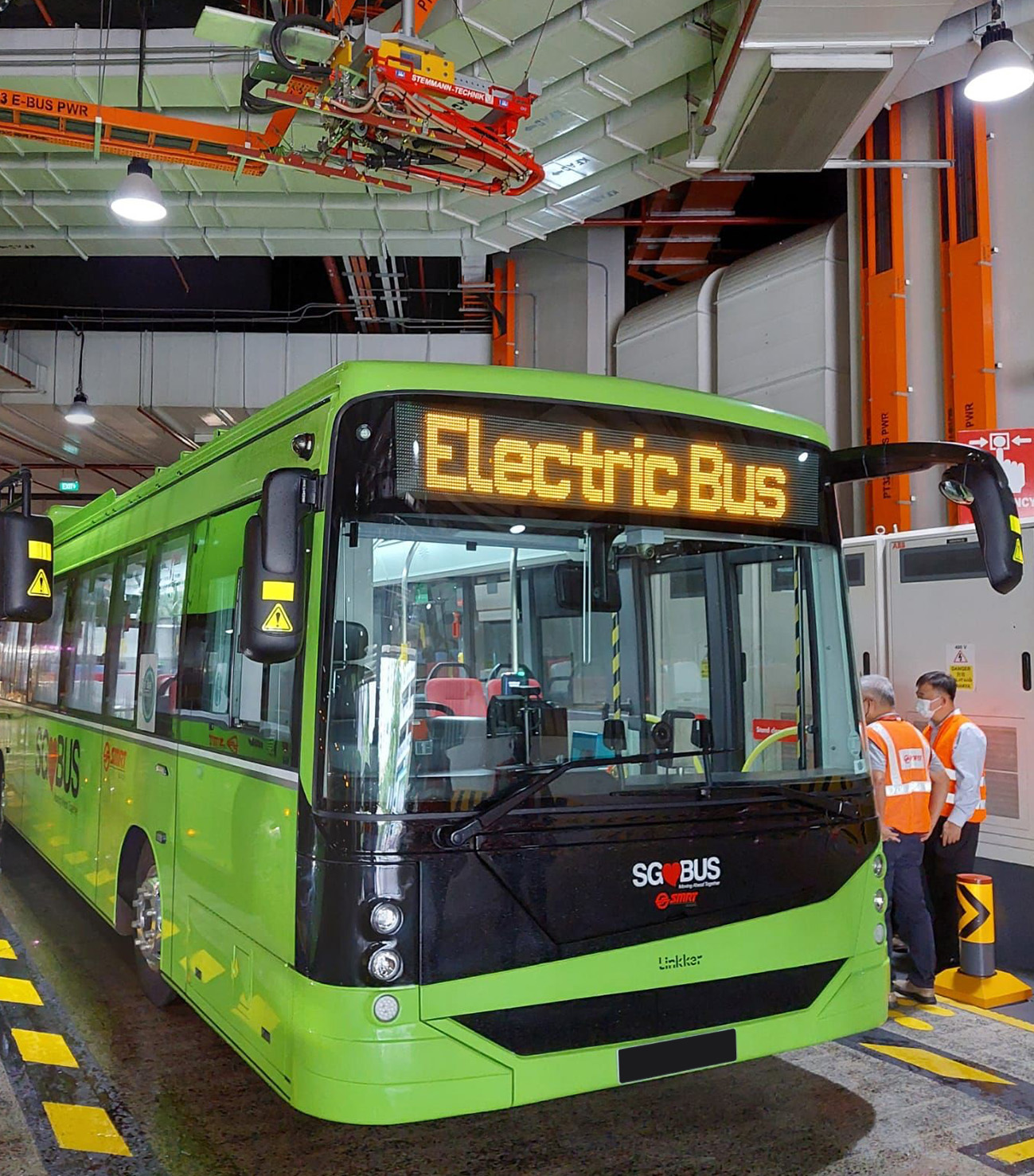Along a busy road in downtown Singapore, an electric bus is moving at peak performance. Every spin of its wheels is supported by a data-driven fleet monitoring and management system that monitors its health in real time. Furthermore, it can be quickly charged without overloading the power grid.
This is made possible by the copious amount of data being collected and analysed to help the transport operator better plan the bus route against a charging regime that’s suitable for its operating environment. Through a process called route profiling, the system captures every single detail of the journey – from the number of times the bus stops, to even the slightest change in a road’s gradient.
Like a mechanic’s cheat sheet, this data plays an invaluable role in helping operators monitor and improve vehicle performance.
Take a road’s terrain for example. If a route has a significant number of downhill slopes, a bus would require less power from its batteries due to regenerative braking – a process that increases battery efficiency by converting energy used to slow down a vehicle into electrical power to charge its batteries.
Using this information, transport operators can assess the battery health of each vehicle in real-time, allowing them to perform predictive maintenance and ensure the buses are always operating in tip-top condition. With batteries being the most expensive component of an electric vehicle (EV), this can lead to significant cost savings and increased efficiency across the entire fleet. It also alleviates concerns about vehicles running out of power during the journey. Transport operators are also able to spread out charging intervals at the depot throughout the day without overloading the power grid with mass charging of their fleets.
The land transport system accounts for 15 per cent of Singapore’s emissions today, making it the third-largest source of emissions. This is largely contributed by public and commercial fleets, due to their high usage. While EVs already promise to reduce carbon emissions and improve air quality, data is set to take this green move up a notch, with the examples above illustrating how data can improve fleet performance, keep EVs in optimal conditions and boost battery efficiency while helping operators achieve sustainability objectives. Together, EVs and data-driven solutions are the twin titans that are set to transform the transport industry.
The Singapore government is advocating a transition to EVs, with plans to switch all 5,800 public buses to electric or hybrid models by 2040. Already, 60 electric buses are in service and they are expected to reduce carbon emissions by about 8,000 tonnes annually – equivalent to removing 1,700 cars from the roads.
 |
 |
| Electric Bus with Pantograph Charging | 3-Door Electric Bus |
The EV trend is also picking up among private car owners. The country’s EV population has more than doubled in the last year, as it looks to phase out petrol and diesel cars by 2040.
Yet for thousands of EVs to be on the roads, Singapore’s charging infrastructure needs to be ready to meet the enormous energy demands. What it has currently, is unlikely to be enough.
ST Engineering has conducted a tabletop study which showed that a single electric bus depot will require 98.9 megawatt-hours (MWh) from the national power grid to charge 500 buses daily. This is equivalent to running 198 refrigerators for an entire year, all in a single day.
If all of Singapore’s depots are to go electric, it could overwhelm the power grid, especially when factoring in charging points for private vehicles. Singapore has already set a national target of having 60,000 charging points in public and private car parks by 2030.
Now, the challenge facing public fleet operators and city planners is to figure out how to solve this issue of increasing demand for power, and optimise the charging regime to meet operational needs.
This is where technology and data come into the picture. For instance, the Land Transport Authority recently rolled out 20 public electric buses that use pantograph charging, a method that allows them to tap opportunistic charging at a higher power rating of up to 450kW during the buses’ short layover time of 10 to 15 minutes at bus interchanges.
Instead of the typical two to four hours required for buses to be fully charged using conventional plug-in charging, pantograph charging achieves this within 15 to 30 minutes. With buses being able to use pantograph chargers in quick succession, the number of charging points required at each interchange/depot can be reduced, easing power requirements from the grid throughout the day.
Beyond improving a vehicle’s performance, data can also be used to create entire fleets of energy-efficient buses through a data-driven fleet management system. ST Engineering has been collecting 100 types of data parameters for analysis through advanced telematics and AI technology. Such data ranges from mileage travelled and battery status, to the amount of carbon emissions, passenger load as well as the correlations between these data parameters.
By combining these valuable data-driven insights with an integrated fleet monitoring and control system, operators can have complete real-time situational awareness, enabling them to accurately assess power requirements and even charging point locations to optimise operations and services.
As an end-to-end EV technology solution provider, ST Engineering recognises that the vehicle electrification journey for every fleet operator is different. Its comprehensive suite of technology-driven EV charging solutions, derived from its deep domain expertise and experience, allows fleet electrification and monitoring to be better deployed and scaled to achieve business and operational goals in a more sustainable manner.
Contact us